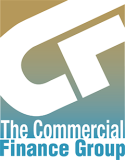In a previous blog, we talked about the cash flow problems that many hospitals and other medical centers across the country face on a day-to-day basis. Due to delayed Medicare claims and growing business expenses, hospitals are having a tougher time than ever before meeting public demands and growing as healthcare businesses. In some cases, they might even have trouble paying their own employees without the help of financing.
However, many hospitals have different priorities when it comes to who they’re paying first with their limited cash flow. If hospitals are using cashflow to pay employees and keep the lights on, who do you think is going to have to wait to get paid off an invoice?
That’s right—it’s the medical equipment suppliers. Companies who supply items like hospital beds, wheelchairs, catheters, and other amd nebulizers are experiencing longer cash conversion cycles while also dealing with steady increases in business—and when these companies don’t have the cash flow to grow and expand to support new business, they have to turn that business away.
This is where medical receivables financing comes in handy. In this blog, the Atlanta medical receivables factoring professionals at The Commercial Finance Group will help you understand the problems medical equipment businesses face, and how medical receivables financing and factoring can help.
What is medical receivables financing?
Medical receivables factoring essentially offers medical suppliers an advance on their invoices, allowing them to have more cash on hand and a greater deal of flexibility when it comes to business operations and growth. In most situations, medical suppliers will send an invoice to a hospital and medical center, and then send a copy of that invoice to the factoring company. The factoring company will then forward a certain percentage of the invoice (usually somewhere between 80 to 90 percent of the invoice) to the medical supplier. The factoring company will use the remaining 10 to 20 percent of the invoice as a buffer, just in case of a billing error.
This essentially eliminates the “cash flow gap,” or the delay in invoice payment for medical suppliers. But how do medical suppliers take advantage of this increase in cash flow? Let’s take a look.
Create A Larger Inventory
With the cash flow gap eliminated, many medical suppliers can expand their business inventory and offer more products to their customers. A larger selection of products is incredibly advantageous for medical suppliers and hospitals—suppliers become more convenient and more likely to generate sales with more products on hand, and hospitals enjoy finding more supplies from less providers, which means fewer invoices and a less complicated picture of business expenses.
Take On More Clients
The cash flow gap is one of the biggest problems for medical suppliers, and it sometimes causes them to turn away business because they can’t afford to purchase more supplies to sell. This problem is eliminated with medical receivables factoring. Once suppliers have the cash flow they need when they need it, they can feel comfortable enough financially to make bigger inventory purchases and take on more clients. Once they increase their number of sustainable, long-term clients, they’ve taken a huge step in terms of business growth.
Buying more inventory and supporting more clients can also have a positive impact on the clients themselves, too. If suppliers are able to buy greater quantities of supplies at cheaper rates, those savings are often passed down to the hospitals and medical centers without cutting into business profits. This allows both the suppliers and the healthcare institutions to grow sustainably.
Grow Their Business
There’s a ton of demand for medical technology and supplies in the healthcare industry—and as healthcare establishments grow, suppliers must grow in tandem. Medical supply businesses must meet the demands of their customers with enough supplies—if they can’t accomplish that, they’re at risk for further financial hardship.
Medical receivables financing is the primary “factor” that helps these supply businesses grow at a healthy rate and consistently meet the demands of healthcare businesses. It’s a win-win-win for all involved: hospitals get the supplies they need, suppliers grow their businesses, and patients get the best supplies and better patient care.
How The Commercial Finance Group Can Help
Many medical suppliers report a turnaround of 45 to even 90 days when it comes to invoices—that’s a wide cash flow gap that’s frustrating and unacceptable for suppliers who need to see steady growth for business success.
Fortunately, The Commercial Finance Group can help with healthcare receivables financing solutions. We provide financing and factoring that’s finely tuned to the needs of healthcare businesses so they can achieve security, sustainability, and growth. Get started with us today!





